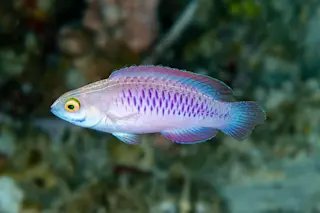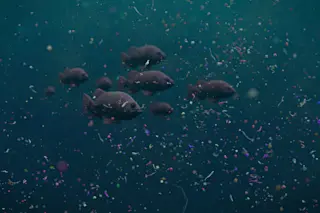Tyrone Hayes stands out in the overwhelmingly white field of biology, and his skin color isn't the half of it. To use his own idiom, Hayes is several standard deviations from the norm. At the University of California at Berkeley, he glides around his lab wearing nylon shorts and rubber flip-flops, with a gold hoop in one ear and his beard braided into two impish points. Not counting his four inches of thick, upstanding hair, Hayes is just over five feet tall, with smooth features and warm eyes. He drives a truck littered with detritus human, amphibian, and reptilian. He keeps his pocket money in a baby's sock. "Hey, wassup?" he'll say to anyone, from the president of the United States on down. He can't help the informality, he says. "Tyrone can only be Tyrone."
Hayes, 35, is a professor at Berkeley, where he has taught human endocrinology since 1994. ...














